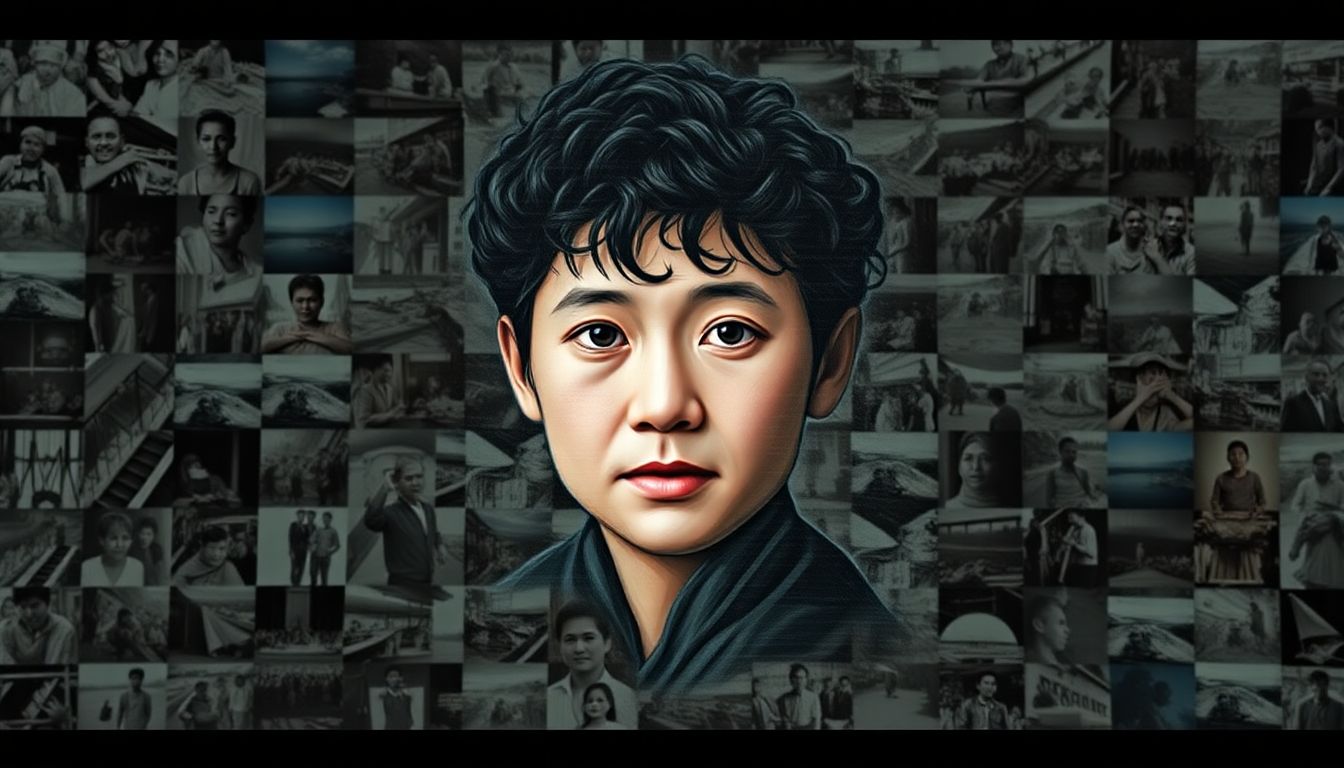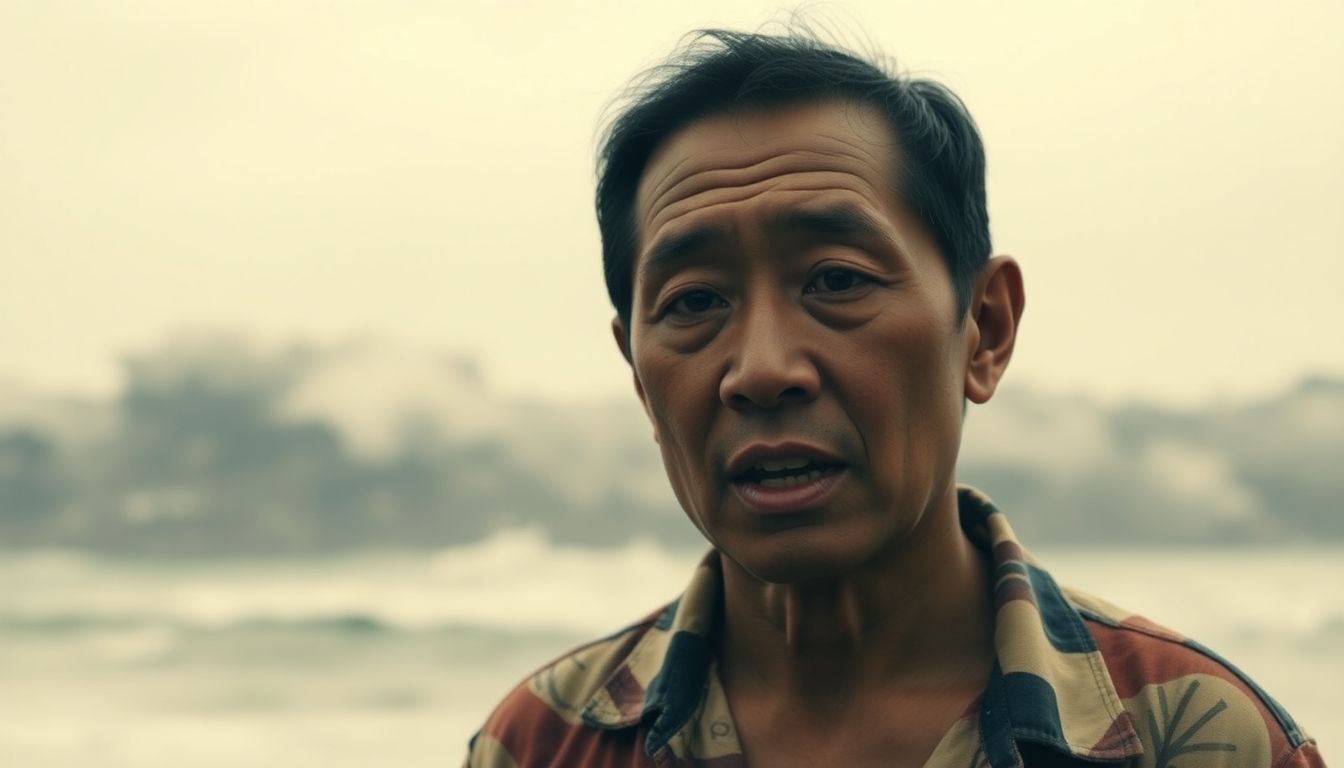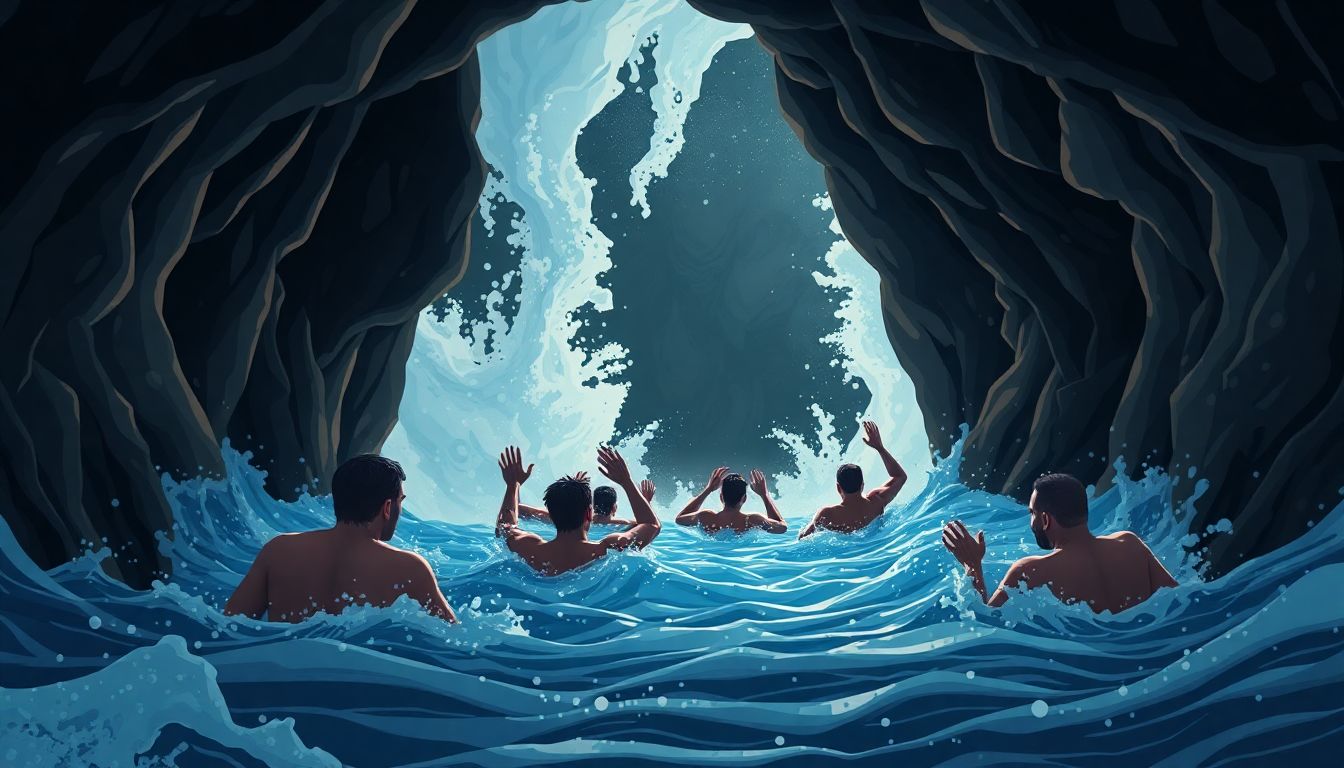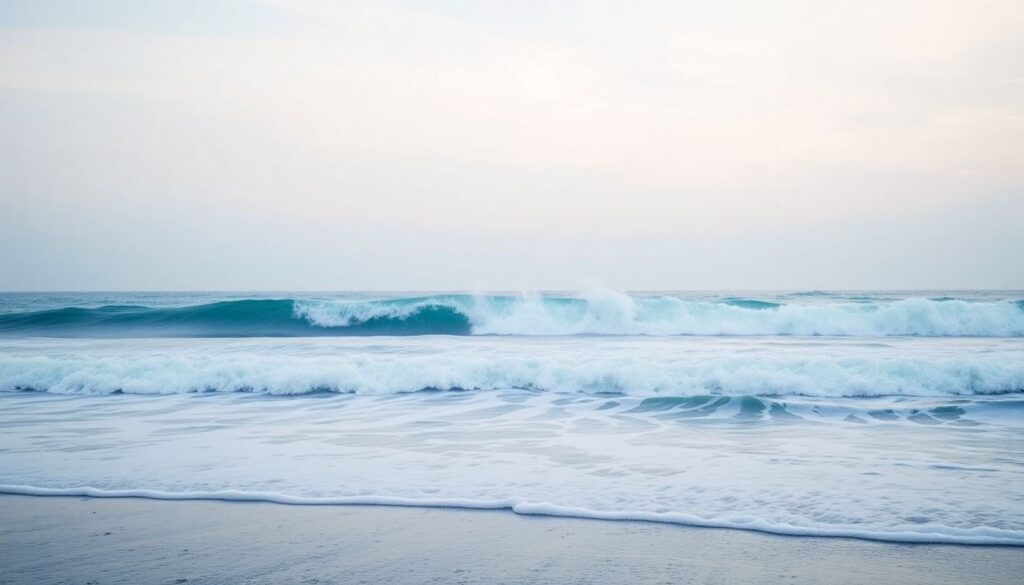Welcome to our in-depth exploration of ‘Tsunami: Race Against Time,’ a profound and gripping documentary series that revisits the 2004 Boxing Day tsunami. This article will guide you through the series’ emotional journey, highlighting its unique storytelling techniques and the compelling testimonies of survivors and witnesses.
The Guardian
Imagine a beachscape so serene, it seems plucked straight from a dream. The sun lazily kisses the sky, painting it with hues of blue and gold. Palm trees sway gently in the warm breeze, their leaves whispering lullabies to the calm sea beneath. The shore stretches out like a welcoming embrace, soft sands dotted with seashells and memories waiting to be made. Children laugh and play, their joy echoing as the waves gently lap against the shore, a soothing rhythm that speaks of peace and tranquility.
Look closer, and you’ll notice the unusual silence of the birds. The air is thick with anticipation, as if nature itself is holding its breath. Far out at sea, a subtle wave begins to form, barely noticeable at first. It’s a dark line on the horizon, a whisper of something unexpected, rolling steadily towards the shore.
The wave approaches, its size growing with each passing second, a stark contrast to the serene beachscape it’s about to engulf. It’s a chilling reminder of nature’s unpredictability, a symbol of the devastating power that lies beneath the surface. This is no ordinary wave, but a harbinger of the 2004 Boxing Day tsunami, a tragedy that would forever change the lives of those in its path.

The Unfolding Catastrophe
In the blink of an eye, the once placid coastline transforms into a scene of unimaginable horror. The initial moments of the tsunami are a chilling symphony of nature’s fury: the distant rumble, the sudden retreat of the sea, and then, the inevitable surge. A wall of water, towering like a monstrous beast, crashes onto the shore, swallowing everything in its path. The sheer scale of the disaster is incomprehensible, as the tsunami claims lives, homes, and dreams, turning lush landscapes into desolate wastelands.
The documentary captures this chaos with a raw, unfiltered lens, using contemporary footage to immerse viewers in the grim reality. Shaky camera movements and frantic screams echo through the speakers, painting a haunting portrait of the event. The screen becomes a window into the past, showing the merciless waves tearing through streets, uprooting trees, and reducing buildings to mere matchsticks.
Survivor testimonies add a poignant, human touch to the narrative. Their voices, filled with emotion and disbelief, recount the harrowing experiences:
- A mother recalling the desperate struggle to keep her children afloat.
- A shopkeeper describing the heart-wrenching decision to leave his store, a symbol of his life’s work, behind.
- A tourist sharing the surreal moment when the wave swept through the hotel lobby, turning a place of leisure into a battlefield.
These stories, told with quivering voices and distant gazes, serve as a stark reminder of the indiscriminate power of nature and the fragility of human life.
The documentary masterfully weaves these personal accounts with the stark visuals, creating a tapestry of tragedy and resilience. It serves as a sobering testament to the events of that fateful day, ensuring that the memories of the lost and the lessons learned are never washed away by the sands of time. The sheer scale of the disaster is brought home not just through the physical devastation, but through the emotional turmoil etched on the faces of those who lived through it.

Storytelling Techniques
The documentary masterfully employs a range of narrative devices to amplify emotional reactions, keeping viewers engaged and invested in the story. One of the most powerful tools used is the juxtaposition of present-day interviews with grainy footage from 2004. This contrast serves multiple purposes. Firstly, it provides a stark visual reminder of the passage of time, highlighting the enduring impact of the events on the survivors’ lives. Secondly, the grainy quality of the old footage adds a sense of immediacy and authenticity, making the past feel more tangible and real. Lastly, the shift between past and present creates a rhythm that keeps the audience emotionally involved, oscillating between reflection and raw experience.
The use of suspense in revealing survivors’ fates is another compelling narrative device. Rather than disclosing their current status immediately, the documentary cleverly weaves a narrative that builds anticipation. By interspersing clips of their past struggles with glimpses of their present lives, the film creates a sense of uncertainty and hope. This technique encourages viewers to become actively invested in each survivor’s journey, eagerly awaiting the resolution of their stories.
To further heighten emotional reactions, the documentary employs several other strategic elements. These include:
- Slow-motion sequences: Used to emphasize pivotal moments, slow-motion footage encourages viewers to linger on critical scenes, absorbing their emotional weight.
- Evocative music: The careful selection of a poignant score amplifies the emotional tenor of various scenes, subtly guiding the audience’s emotional response.
- Personal anecdotes: The inclusion of personal stories and anecdotes from survivors creates a deep emotional connection, making the events feel more personal and relatable.
Moreover, the documentary leverages the power of symbolism to convey deeper meanings. Recurring motifs, such as images of nature or specific objects, serve as visual metaphors that underscore the themes of resilience, hope, and the passage of time. By intertwining these symbolic elements with the survivors’ stories, the film creates a rich tapestry of emotion and meaning that resonates profoundly with viewers.

Key Perspectives
In the wake of the disaster, experts and witnesses played pivotal roles in both understanding and communicating the extent of the devastation. One of the key figures was seismologist Barry Hirshorn, who provided invaluable insights into the geological aspects of the event. Hirshorn’s expertise was crucial in explaining the tectonic shifts that triggered the catastrophe, helping the public grasp the scientific underpinnings of the disaster.
Hirshorn’s analysis didn’t stop at the scientific explanations; he also offered critical information on the potential aftermath, including aftershocks and their implications for rescue efforts and infrastructure stability. His predictions and advice were instrumental in guiding emergency response teams and government agencies in their relief and recovery operations.
Meanwhile, CNN editor Eli Flournoy was at the forefront of communicating the disaster to the world. Flournoy’s editorial leadership ensured that the news outlet provided up-to-the-minute, accurate information about the event as it unfolded. This included:
- Real-time updates on the scale of the disaster
- Reports from eyewitnesses on the ground
- Expert analyses from professionals like Hirshorn
- Crucial information on relief efforts and how the public could assist
Flournoy’s commitment to comprehensive and responsible journalism made CNN a reliable source of information, keeping the global audience informed and engaged in the developing story.

Extraordinary Stories
The documentary opens with a spellbinding account of the group trapped in Emerald Cave, a hidden gem in the blue waters of Thailand. This isn’t your average spelunking expedition gone wrong. Picture this: a group of tourists and their guides, lured by the crystal-clear waters and the promise of adventure, find themselves trapped in the cave as the tide begins to rise. The sun dips below the horizon, and the group realizes that their only exit is now submerged and impassable. The narrative toggles between the tourists’ growing apprehension and the rescue team’s strategic planning, keeping viewers on the edge of their seats. This story sets the tone for the documentary, illustrating the fine line between adventure and peril, and the importance of local knowledge and preparedness.
The Sri Lankan train disaster is another gripping chapter that underscores the documentary’s overarching theme: the power of nature and the importance of respecting it. In 2004, a crowded passenger train, packed with locals and tourists alike, was swept off its tracks by a colossal tsunami wave. The train, dubbed the ‘Queen of the Sea,’ was reduced to a mangle of metal, its passengers and crew caught unawares by the force of the water. The filmmakers interweave personal testimonies, news footage, and expert commentary to create a vivid portrait of the event. This segment is a poignant reminder of nature’s unpredictability and the need for robust early warning systems and infrastructure.
These stories, along with others featured in the documentary, contribute to its overall narrative in several ways:
- They highlight the universality of human experience, showing that regardless of our backgrounds or locations, we all face similar challenges and triumphs in the face of adversity.
- They emphasize the importance of preparedness and understanding of our natural world, illustrating how underestimating or misjudging nature’s power can have devastating consequences.
- They showcase the resilience of the human spirit, demonstrating our capacity to overcome hardship, learn from our experiences, and move forward.
The documentary’s strength lies in its ability to interweave these extraordinary stories, drawing viewers in with its compelling narrative and provoking thoughtful reflection. It reminds us that we are all part of a global community, interconnected and interdependent, and that we all have a role to play in understanding and protecting our world.
FAQ
What caused the 2004 Boxing Day tsunami?
How does the documentary use storytelling techniques to engage viewers?
- Contrasting present-day interviews with grainy 2004 footage.
- Using suspense to reveal the fates of survivors.
- Incorporating expert testimonies to provide context and depth.
Who are some of the key figures featured in the documentary?
- Barry Hirshorn, a seismologist stationed at the Pacific Tsunami Warning Center in Hawaii.
- Eli Flournoy, a CNN editor who was working during the disaster.
- Survivors from various affected regions who share their personal experiences.
What are some of the most extraordinary stories featured in the documentary?
- A group of tourists trapped in Emerald Cave on Ko Muk island in Thailand.
- A train in Sri Lanka that flooded and tipped over, resulting in the worst railway disaster in history.
- The triaging and treating of hundreds of injured people on the Thai island of Koh Phi Phi.









